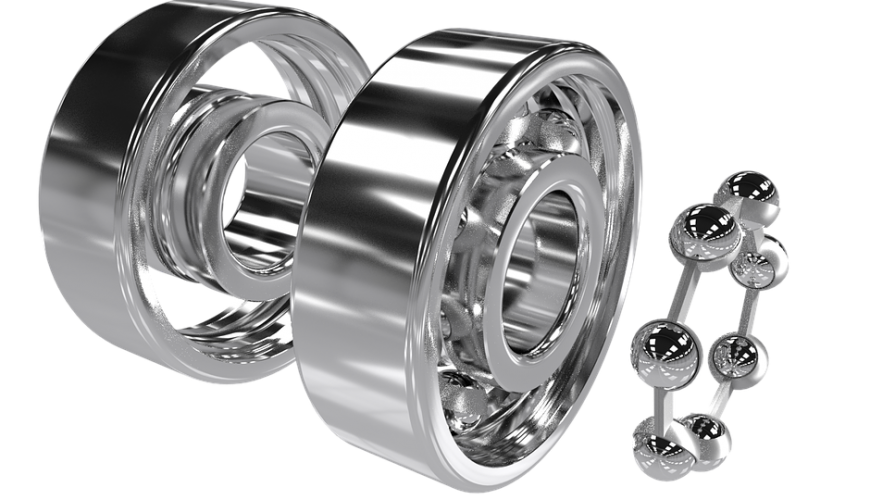There are several common designs of ball bearing, each offering various performance trade-offs. They can be made from many different materials, including: stainless steel, chrome steel, and ceramic (silicon nitride (Si3N4)). A hybrid ball bearing is a bearing with ceramic balls and races of metal.
Angular contact
An angular contact ball bearing uses axially asymmetric races. An axial load passes in a straight line through the bearing, whereas a radial load takes an oblique path that acts to separate the races axially. So, the angle of contact on the inner race is the same as that on the outer race. Angular contact bearings better support combined loads (loading in both the radial and axial directions) and the contact angle of the bearing should be matched to the relative proportions of each. The larger the contact angle (typically in the range 10 to 45 degrees), the higher the axial load supported, but the lower the radial load. In high-speed applications, such as turbines, jet engines, and dentistry equipment, the centrifugal forces generated by the balls changes the contact angle at the inner and outer race. Ceramics such as silicon nitride are now extensively used in such applications due to their low density (40% of steel). These materials significantly reduce centrifugal force and function well in high temperature environments. They also tend to wear in a similar way to bearing steel—rather than cracking or shattering like glass or porcelain.
Most bicycles use angular-contact bearings in the headsets because the forces on these bearings are in both the radial and axial direction.
Axial
An axial or thrust ball bearing uses side-by-side races. An axial load is transmitted directly through the bearing, while a radial load is poorly supported and tends to separate the races, so that a larger radial load is likely to damage the bearing.
Deep groove
In a deep-groove radial bearing, the race dimensions are close to the dimensions of the balls that run in it. Deep-groove bearings support higher loads than a shallower groove. Like angular contact bearings, deep-groove bearings support both radial and axial loads, but without a choice of contact angle to allow choice of relative proportion of these load capacities.
Preloaded pairs
The above basic types of bearings are typically applied in a method of preloaded pairs, where two individual bearings are rigidly fastened along a rotating shaft to face each other. This improves the axial runout by taking up (preloading) the necessary slight clearance between the bearing balls and races. Pairing also provides an advantage of evenly distributing the loads, nearly doubling the total load capacity compared to a single bearing. Angular contact bearings are almost always used in opposing pairs: the asymmetric design of each bearing supports axial loads in only one direction, so an opposed pair is required if the application demands support in both directions. The preloading force must be designed and assembled carefully, because it deducts from the axial force capacity of the bearings and can damage bearings if applied excessively. The pairing mechanism may simply face the bearings together directly, or separate them with a shim, bushing, or shaft feature.


